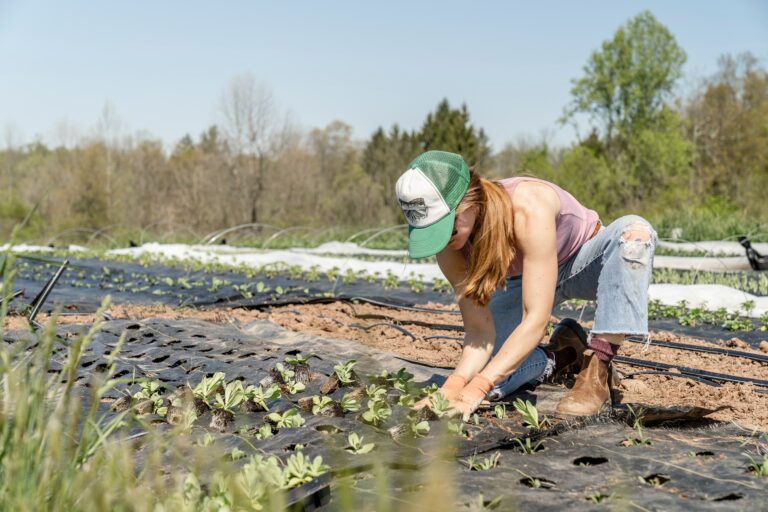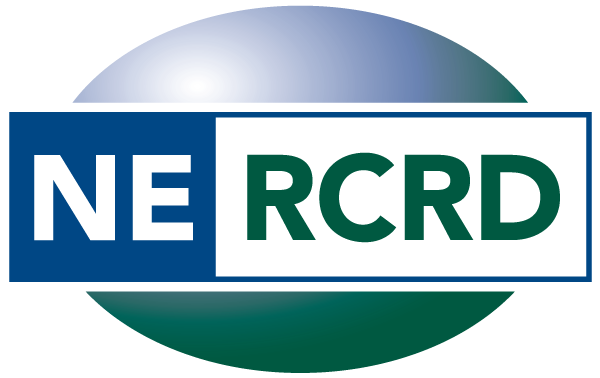
Food Systems, Nutrition Security, and Agriculture
From agricultural profitability and market opportunities to nutrition and environmental stewardship, researchers and Extension professionals across the region provide analysis, training, and technical assistance designed to help individuals, businesses, and communities make balanced and informed decisions about the many opportunities associated with regional food systems.
Recent Publications
Insights on Agritourism Among Producers in Western U.S. States: Evidence from the 2024 National Agritourism Producer Survey
This report presents findings from the 2024 National Agritourism Producer Survey, conducted in part to address the type of knowledge gaps just identified. The survey questionnaire was developed by Cooperative Extension researchers as part of a larger project aimed at defining and enhancing the agritourism support system in the United States. The online survey was open from March through August 2024, and 2,139 agritourism operators across the United States responded. A total of 136 survey participants identified themselves as being in a Western region states by reporting the postal (ZIP) code of their farm. (To access the national-level findings, visit this page.)
This survey is part of a larger project aimed at defining and enhancing the agritourism support system in the United States. The primary objective of conducting this survey was to identify areas where targeted interventions and programs can support agritourism development. Respondents were asked to evaluate several critical factors that impact their agritourism business. This included rating the degree to which they felt different aspects of the environment pose a challenge to developing agritourism in their region, tourism features of the region in which they operate, the socio-cultural environment in which they operate, and their views on how challenging the regulatory landscape is to their agritourism business.
Authors: Jason Entsminger, Claudia Schmidt, Sarah Cornelisse, and Jackie Schweichler
Publication: NERCRD Research Brief Date Published: June 3, 2025
Insights on Agritourism Among Maine Producers: Evidence from the 2024 National Agritourism Producer Survey
This report presents Maine-specific findings from the 2024 National Agritourism Producer Survey, conducted in part to address the type of knowledge gaps just identified. The online survey was open from March through August 2024, and 2,139 agritourism operators across the United States responded. A total of 94 survey participants identified themselves as being in Maine by reporting the postal (ZIP) code of their farm.
Authors: Jason Entsminger (University of Maine); Claudia Schmidt (Penn State and NERCRD); Sarah Cornelisse and Jackie Schweichler (Penn State)
Publication: Published by NERCRD Date Published: May 2, 2025
Tags: agritourism, agritourism data brief, data brief, survey
Insights on Agritourism Among US Producers: Evidence from the 2024 National Agritourism Producer Survey
This report presents findings from the 2024 National Agritourism Producer Survey. The survey questionnaire was developed by researchers from Penn State, the University of Maine, the University of Vermont, and Oklahoma State University. This survey is part of a larger project aimed at defining and enhancing the agritourism support system in the United States. The primary objective of conducting this survey was to identify areas where targeted interventions and programs can support agritourism development across the country. A webinar about the findings took place on April 23, 2025, and was recorded. Access the recording here.
Authors: Claudia Schmidt (Penn State and NERCRD), Jason Entsminger (University of Maine), Sarah Cornelisse and Jackie Schweichler (Penn State)
Publication: Published by NERCRD Date Published: April 21, 2025
Tags: agritourism, agritourism data brief, data brief, survey
Detecting Food Shortages Using X
NERCRD researchers along with faculty from the Institute for Computational and Data Sciences (ICDS) in the College of Information Sciences and Technology at Penn State University and the Qatar Computing Research Institute at Hamad Bin Khalifa University in Qatar studied whether tweets posted on Twitter (now X) can be used to predict real-time food shortages during crises such as pandemics, wars, or natural disasters. Learn more in this NERCRD Digest.
Authors: NERCRD
Publication: NERCRD Digest Series Date Published: September 16, 2024
Tags: COVID-19, NERCRD Digest
Food Insufficiency and Anxiety
Researchers from the NERCRD and the Department of Agricultural Economics, Sociology and Education at Penn State University used Household Pulse Survey data from the U.S. Census Bureau to address questions about food insufficiency and mental health. Learn more in this NERCRD Digest.
Authors: NERCRD Staff
Publication: NERCRD Digest Date Published: September 5, 2024
Tags: food security, NERCRD Digest
View all publications in Food Systems, Nutrition Security, and Agriculture
Current NERCRD Projects
Multistate Regional Research Project (NE1)
The Northeast Regional Center for Rural Development conducts original research with its partners and connects faculty and Extension educators in the region with one another and to national collaborators and resources, thereby creating synergies and reducing duplication of effort. The four goals of this multi-state Hatch project are approved by the NERCRD’s Board of Directors’ and are to:
- Build regional capacity and facilitate the integration of research and outreach.
- Support rural economic development and entrepreneurship, and innovation.
- Facilitate tourism development, including agritourism.
- Measure and promote food and nutrition security.
If you are interest in participating in this regional research project, please contact Stephan Goetz.
Funding Agency: Northeast Regional Association of Experiment Station Directors
Principal Investigator: Stephan J. Goetz, Penn State/NERCRD
Start Date: October 2024 End Date: September 2029
Creating an Effective Support System For Small And Medium-Sized Farm Operators To Succeed In Agritourism
Agritourism activity has the potential not only to keep small- and medium-sized farms in business but also to provide important local economic development spillover effects. While agritourism is not profitable or even appropriate in all communities, various stakeholders report that key barriers currently prevent farmers who would like to provide agritourism services from doing so. These barriers represent opportunity costs and include not only lack of information among producers, consumers, supporting organizations and policy makers, but also regulatory gaps across the states. Drawing on extensive stakeholder input, guidance and collaboration, the goal of this four-year project led by NERCRD Faculty Affiliate Claudia Schmidt (Penn State) is to develop and disseminate practical information that will allow small- and medium-sized farmers and rural communities to benefit from the growing consumer interest in agritourism activities. Supporting objectives include understanding the roles and educational needs of various organizations in supporting agritourism; improving understanding of factors that contribute to growth in agritourism across U.S. counties; and delivering peer-reviewed educational materials to farmers as well as supporting organizations and policy makers.
Collaborators on the project included:
- Claudia Schmidt, Penn State and NERCRD, PI
- Lisa Chase, University of Vermont
- Jason Entsminger, University of Maine
- Stephan J. Goetz and Zheng Tian, Penn State and NERCRD
- Sarah Cornelisse, Jackie Schweichler, and Suzanna Windon, Penn State
- Stacy Tomas, Oklahoma State University
Below is a list of impacts and outputs from this project, which will be updated regularly as the research is ongoing. For a complete report on the work of this project, visit the USDA NIFA reporting portal.
Selected Impacts:
- Through a number of publications and presentations made by the project team, researchers, agritourism support organizations, and non-technical audiences have increased their understanding of the status of agritourism in the U.S. and how it can be supported.
- For example, the researchers found that agritourism and direct farm sales complement one another when they occur within the same community. These findings could help farmers and the local organizations that support them plan strategically for farm resilience and growth, and were shared widely via a peer-reviewed publication, a Penn State News release, and presentations.
- The researchers also found that availability and adoption of high-speed broadband appears to boost the number of farms offering agritourism activities. These findings bolster the argument for expanding broadband availability in support of farm operators who want to benefit from the growing consumer interest in on-farm experiences. This research was published in the Journal of the Agricultural and Applied Economics Association, and were shared widely via a Penn State News release and presentations.
Selected Outputs
- Entsminger, J. S., Schmidt, C., Cornelisse, S., & Schweichler, J. (2025a). Insights on Agritourism Among Maine Producers: Evidence from the 2024 National Agritourism Producer Survey (2025–2; NERCRD Data Brief).
- Entsminger, J. S., Schmidt, C., Cornelisse, S., & Schweichler, J. (2025b). Insights on Agritourism Among Producers in Western U.S. States: Evidence from the 2024 National Agritourism Producer Survey (2025–3; NERCRD Data Brief).
- Entsminger, J. S., & Schmidt, C. (2024a). Agritourism and Recreational Services on US Farms: Data from the 2022 Census of Agriculture. (NERCRD Data Brief 2024–1).
- Entsminger, J. S., & Schmidt, C. (2024b). Direct-to-Consumer Sales of Agrifood Products by US Farms: Data from the 2022 Census of Agriculture. (NERCRD Data Brief 2024–2).
- Hollas, C. R., Chase, L., Conner, D., Dickes, L., Lamie, R. D., Schmidt, C., Singh-Knights, D., & Quella, L. (2021). Factors Related to Profitability of Agritourism in the United States: Results from a National Survey of Operators. Sustainability, 13(23), 13334.
- Schmidt, C., Chase, L., Barbieri, C., Rilla, E., Knights, D. S., Thilmany, D., Tomas, S., Dickes, L., Cornelisse, S., Lamie, R. D., Callahan, R., George, H., Leff, P., Schmidt, C., Chase, L., Barbieri, C., Rilla, E., Knights, D. S., Thilmany, D., … Leff, P. (2022). Linking Research and Practice: The Role of Extension on Agritourism Development in the United States. Applied Economics Teaching Resources, 4(3).
- Schmidt, C., Han, L., Moghadam, A., & Goetz, S. J. (2024). Broadband access and agritourism operations in the United States. Journal of the Agricultural and Applied Economics Association, jaa2.128.
- Schmidt, C., Tian, Z., Goetz, S. J., Hollas, C. R., & Chase, L. (2023). Agritourism and direct sales clusters in the United States. Agricultural and Resource Economics Review, 52(1), 168–188.
- Schmidt, C., Entsminger, J., Lo, K., Hollas, C., Tomas, S., Goetz, S. J., & Cornelisse, S. (2023). Agritourism in the United States: State and National Fact Sheets. (More information about the fact sheets is available via this Penn State News article.)
- Schmidt, C., Entsminger, J. S., Cornelisse, S., & Schweichler, J. (2025). Insights on Agritourism Among US Producers: Evidence from the 2024 National Agritourism Producer Survey (2025–1; NERCRD Data Brief).
Funding Agency: USDA NIFA
Principal Investigator: Claudia Schmidt, Penn State
Accompanying Institution(s): University of Vermont, Oklahoma State University, University of Maine
Start Date: July 2020 End Date: June 2026
